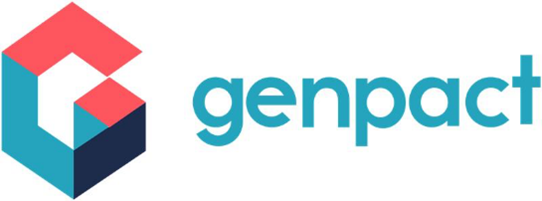

About Sanjiv Tandon, Global Leader
Sanjiv has 23+ years of experience in Sales & Business Development, Operations & Service Delivery and Client Servicing & Relationship Management across multiple industry verticals including Life Sciences, Consumer Products, and Financial Services.

About Robert Baldry, Life Science Regulatory Affairs Transformation Leader
Robert Baldry, Life Science Regulatory Affairs Transformation Leader with 20+ years partnering with business leaders and technology experts to drive large business transformations.

About Genpact
Genpact (NYSE: G) is a global professional services and solutions firm delivering outcomes that shape the future. Our 125,000+ people across 30+ countries are driven by our innate curiosity, entrepreneurial agility, and desire to create lasting value for clients. Powered by our purpose – the relentless pursuit of a world that works better for people – we serve and transform leading enterprises, including the Fortune Global 500, with our deep business and industry knowledge, digital operations services, and expertise in data, technology, and AI.
Does AI have the answer in regulatory affairs?
How technology can improve relations with health authorities
In an era of rapid innovation and increasing governance across the life sciences industry, artificial intelligence (AI) has already been embraced by many leadership teams for competitive intelligence. And now it’s becoming a powerful tool for regulatory affairs professionals, too. They’re using this technology to stay on top of regulatory requirements, predict when potential issues might arise, and make key decisions with greater confidence.
How companies respond to regulators’ inquiries on their drugs or medical devices has a far-reaching impact. Traditionally, responding accurately and consistently to a health authority’s questions has been time-consuming and labor-intensive. Today, AI is poised to revolutionize this critical part of the regulatory process. But many professionals don’t feel like the technology is living up to its promise.
The regulatory challenge: too much data, no room for error
From initial product approvals to addressing safety concerns, companies must provide health authorities with precise information and well-documented responses to their queries.
But it’s not easy. Siloed data and manual processes prevent life sciences companies from quickly and accurately responding to regulators. A subject matter expert in Switzerland, for example, must find, aggregate, and analyze the right information and check that it’s complete and consistent with what’s already been shared with health authorities, even if it was in Portuguese for the Brazilian regulator.
Not getting it right is not an option. The consequences of inaccurate responses can be severe, ranging from financial penalties for non-compliance to delays in the development and approval of potentially life-saving treatments. Indeed, the reputational risks alone are too great to ignore.
While AI holds immense promise for improving the regulatory process, these solutions must understand the needs of regulatory professionals. They must be tailored to and embedded in their workflows from the bottom up, be able to learn continuously from the inputs they receive, and have a human in the loop at all times. Leaving AI to operate like an autonomous black box is not only untenable but also potentially unethical given the high stakes involved.
Implementing a people-focused solution
By taking a human-centered approach to AI implementation, regulatory teams instill confidence in the insights the technology generates, the decisions those insights lead to, and the veracity of the responses they provide to regulatory authorities.
One global pharmaceutical company serves as a prime example of AI in action. It adopted a generative AI solution that extracts and structures unstructured data from vast volumes of historical question-and-answer documents, discussions with regulators, and product dossiers in multiple languages. The technology finds the information it needs, even if it’s not an exact match, and calls out what’s relevant.
After analyzing the question and conducting the research, AI generates a draft response that subject matter experts and internal auditors can review vigorously with easy access to the source material.
Moreover, AI can predict whether a specific health authority is likely to find a response acceptable. For example, it understands what level of detail or style of charts a regulator prefers, so regulatory teams can be more proactive.
Developing a practical implementation strategy
To successfully implement AI solutions that drive higher adoption and meaningful impact, leading companies follow a structured approach. This includes:
- Identifying high-value opportunities for integrating AI into existing processes and regulatory workflows
- Training AI models on internal and external data, ensuring data governance, and developing AI guidelines
- Building a robust and scalable architecture
- Using AI operating models that require human collaboration
- Nurturing regulatory talent and improving employee experiences
- Establishing continuous monitoring and refinement
Sharper responses, enhanced experiences, healthier people
By adopting a human-centered approach to AI implementation, life sciences companies can respond to health authorities more accurately, consistently, and with greater auditability. Businesses can expect up to 50% faster response times with improved consistency and transparency too. This approach not only reduces the workload for regulatory affairs teams it does so for regulators too, helping build better relationships between them both.
Moreover, the integration of AI into regulatory affairs workflows transforms the experience for knowledge workers, reducing repetitive tasks and increasing the quality of their work.
But most importantly, the faster life sciences firms can respond to health authorities, the faster they can deliver critical medicines and treatments to the people who need them most.
Combining artificial intelligence with human knowledge
As the life sciences industry continues to push the boundaries of innovation, the role of AI in regulatory affairs will become pivotal. By combining the power of automation with human expertise and oversight, companies can deliver swifter, more accurate, and more consistent interactions with healthcare regulators worldwide.
For regulatory affairs professionals looking to stay ahead of the curve, embracing a human-centered approach to AI adoption will earn sustained success in a competitive and rapidly evolving landscape.